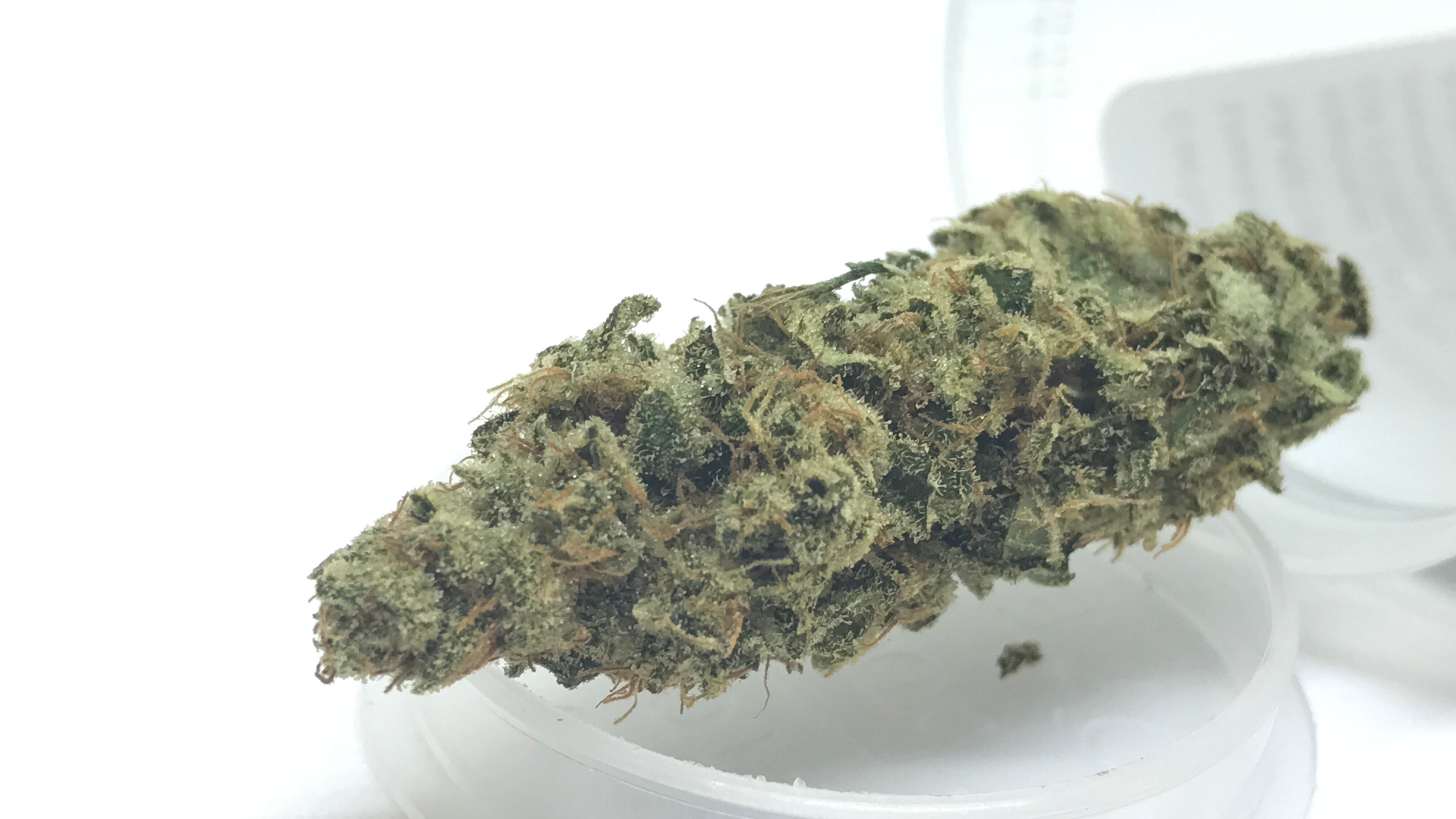Strain: Cactus (sativa phenotype)
Parentage: Northern Lights x Afghani
Breeder: Jordan of the Islands
Grower: Devil's Lettuce
Cannabinoid Content: 27.7% THC, 0.1% CBD
It's a common scenario.
You fall in love with a strain. Your bag runs out. And then you want more of the same stuff.
But when you look to find a new supply of the flower you've come to adore, everything that bears its name isn't quite the same.
Or it's altogether different—what once put you in the mood for a dance party now makes you pass out.
Different growing methods and nutritional plans express strains differently, but flashy bright sativa-dominant strains don't suddenly become purple-flared indicas at the genetic level, right?
Well, sometimes they do. And this is referred to as phenotypic variation.
To understand phenotypic variation, you must first understand basic cannabis breeding, which is pretty much the same as all sexual reproduction.
A female and male are mated—in the case of cannabis, via clouds of pollen that fall on the hundreds of pistils and calyxes that comprise a female bud—thus producing seeds. Each seed will result in a unique expression of both parent's genetic material, some favoring mom, others dad, and yet more that will look a little like both.
Phenotypic variation is why humans born from the same parents are often very dissimilar expressions of the same base materials, and why two cannabis plants made from the same crossing can produce effects on opposite ends of the spectrum.
I recently experienced this phenomenon in a cross of Northern Lights and Afghani bred by Jordan of the Islands called Cactus that I first picked up on impulse on my way out of town to the coast.
I found the strain stony and cognitively numbing as I scanned the sands of Rockaway Beach with a metal detector, hoping to discover treasure without taking the time to learn how to use the unfamiliar device, which occasionally beeped at my shoes.
It was a decent high, but nothing exceptional, and I filed it away under "too baked to operate a metal detector."
But the other day when I stopped by Bloom on MLK to scope the place for our upcoming Potlander annual, I was steered toward a sativa-dominant phenotype of Cactus that was a bit different from the sleepy expression that made me not know how to use a metal detector.
While both were grown by Devil's Lettuce, the less-common expression of Cactus carried at Bloom tested above its counterpart at 27.7% THC and a negligible 0.1% CBD.
When I got home and broke out the flower for a photo shoot, its scent filled the air with a sweetness and spice. And after 30 minutes snapping photos and drooling over the sample I'd acquired, I gave it a try.
Two hits was almost too much.
Like a squid shooting its ink into a fish tank, the high blossomed to the limits of my receptors. Once my head felt full, it then felt racy and elated. And it's all a blur from there.
Quite the contrast from the Cactus of my botched Rockaway Beach metal detecting expedition.
It just goes to show: there's only so much to a name.
So the next time you're out looking for THAT STRAIN, keep in mind that nearly all phenotypes come with a little variation—and even genetically identical plants are influenced by their nutrition, environment, and harvest conditions— and that you might not be able to immediately locate the exact high you're looking for solely by name.
Instead, pay attention to the farms that produce weed you enjoy, learn your terpenes, and if you're lucky enough to have eyes for a popular phenotype—such as the Forum or Thin Mint cuts of Girl Scout Cookies—definitely take some mental notes before you smoke it all and lose the pop-top.
